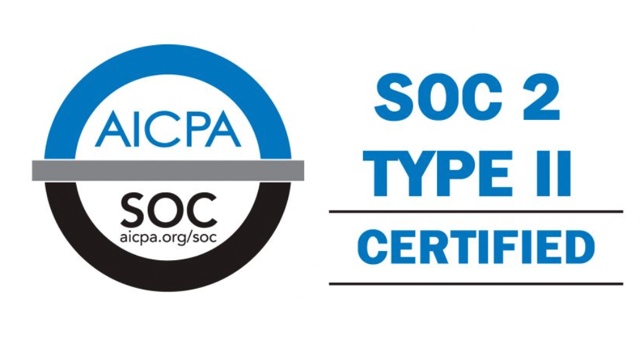
From 100 to 1 million Transfers: Scaling MFT for Enterprise Growth
From 100 to 1 million Transfers: Scaling MFT for Enterprise Growth Ever wondered what happens when your daily file transfers multiply by
In the beginning, many companies underestimate the challenges of integrating data across hybrid computing infrastructures. SaaS (Software as a Service) applications will be at the center of most public-private cloud integration challenges.
Many IT businesses are used to controlling the data sources they integrate, so this may be a unique experience for them. Because of their previous data center integration experience, they feel they already have the tools and knowledge needed to oversee the integration process.
The IT department must put in a lot of effort to accommodate SaaS platforms with data stored in the data center. Companies can develop custom-coded interfaces between internal and cloud apps with enough time and programming resources. Keeping a custom solution up to date, on the other hand, can necessitate a large amount of continuing care.
One of the hallmarks of a SaaS environment is that the application’s developer frequently makes modifications to the application’s structure without telling clients. These modifications may have an impact on the integration process.
The five basic needs for developing this standardized strategy to integrate data between internal data center apps and public and private clouds are as follows: you need a common and standardized technique to link your applications wherever they’re managed
You must be able to quickly and effectively link a broad range of apps and data without requiring a lot of continuous maintenance. You must also examine other sorts of integration, such as data migration, process integration, or a new innovative type of integration, such as transferring data from an internal application and displaying it in a SaaS service.
It’s possible that you’ll need to link two applications, or that you’ll need to connect one application to a number of other application endpoints. The flexibility to seamlessly scale from a one-to-one to a one-to-many integration is even more critical. Furthermore, different communication protocols or methodologies may perform better in different situations, so you must be prepared to select multiple options depending on your business needs.
Customers’ data from a line-of-business application (such as accounting) must be mapped to customer data from a SaaS application. Both of these data sources may have the same format, if you’re lucky. Apps are often built or managed by various entities that do not interact. For example, the IT department is responsible for the data in the ERP system, whilst the sales department has its own team in charge of the data in the SaaS CRM system.
The accounting system must be consistent with the sales management system, according to business management. Your IT staff is probably aware of the data format specifications in your legacy systems, but they may not be as familiar with the details of the data in your SaaS applications.
In a hybrid environment, you need to bring services from many environments together as if they were one unified environment. The utilisation of a hybrid environment necessitates this form of service administration. The goal isn’t just to mix the benefits of public and private cloud services; you also need to develop an overall service level agreement (SLA) to sustain the combined environment.This service level must be planned to ensure that the new virtual cloud world’s overall security, governance, performance, monitoring, and management are all met.
Business logic and processes that control the way data is managed are part of the systems that have the data you care about. You can’t just connect data items without first learning how these systems work from a business process standpoint. It helps to be able to graphically define the data flow between source and target applications, for example.Business logic and processes that control the way data is managed are part of the systems that have the data you care about. You can’t just connect data items without first learning how these systems work from a business process standpoint. It helps to be able to graphically define the data flow between source and target applications, for example.
Using an integration provider who has researched the metadata format of SaaS services is one way to speed up integration. These companies might offer a pre-configured integration pattern or template to help begin the process of connecting data sources.Working with a standardised template has the advantage of being able to reuse it for subsequent integration projects. Typically, the template is meant to cover around 60% of the needs for a given integration.
Whatever type of data you’re dealing with, it’ll be stored on certain hardware platforms, connected to third-party services, and run on unique storage environments. All of these pieces form part of the way you control data flow between your data center and cloud applications. Regardless of the type of data you’re dealing with, it’ll be stored on certain hardware platforms, connected to third-party services, and run on unique storage environments. All of these components become part of the way you control data flow between your data center and cloud applications.
The overall efficiency of your hybrid environment can be severely harmed by a lack of planning. You must concentrate on overall management of business workloads to be successful in breaking down data and processing silos. This is particularly true as work environments become more fluid and mobile.
Browse Categories
Share Blog Post

From 100 to 1 million Transfers: Scaling MFT for Enterprise Growth Ever wondered what happens when your daily file transfers multiply by

In today’s fast-paced world of data analytics and AI, optimizing your data infrastructure is key to unlocking valuable insights and driving innovation.

In today’s fast-paced world of data analytics and AI, optimizing your data infrastructure is key to unlocking valuable insights and driving innovation.
We are a forward-thinking technology services provider dedicated to driving innovation and transformation across industries.


| Cookie | Duration | Description |
|---|---|---|
| cookielawinfo-checkbox-analytics | 11 months | This cookie is set by GDPR Cookie Consent plugin. The cookie is used to store the user consent for the cookies in the category "Analytics". |
| cookielawinfo-checkbox-functional | 11 months | The cookie is set by GDPR cookie consent to record the user consent for the cookies in the category "Functional". |
| cookielawinfo-checkbox-necessary | 11 months | This cookie is set by GDPR Cookie Consent plugin. The cookies is used to store the user consent for the cookies in the category "Necessary". |
| cookielawinfo-checkbox-others | 11 months | This cookie is set by GDPR Cookie Consent plugin. The cookie is used to store the user consent for the cookies in the category "Other. |
| cookielawinfo-checkbox-performance | 11 months | This cookie is set by GDPR Cookie Consent plugin. The cookie is used to store the user consent for the cookies in the category "Performance". |
| viewed_cookie_policy | 11 months | The cookie is set by the GDPR Cookie Consent plugin and is used to store whether or not user has consented to the use of cookies. It does not store any personal data. |
Thank you for submitting your details.
For more information, Download the PDF.
Thank you for registering for the conference ! Our team will confirm your registration shortly.
Invite and share the event with your colleagues
IBM Partner Engagement Manager Standard is the right solution
addressing the following business challenges
IBM Partner Engagement Manager Standard is the right solution
addressing the following business challenges
IBM Partner Engagement Manager Standard is the right solution
addressing the following business challenges